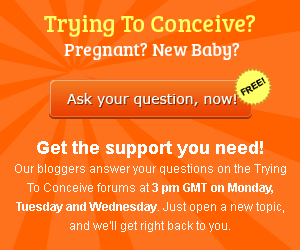Clomiphene citrate, also known by its brand names Clomid and Serophene, is the most commonly prescribed fertility drug used to induce ovulation. Although being successful in infertility treatment, not all women are advised to use Clomid, before the doctor recommends them to do so. This powerful ovulation inducing drug could also have various side effects that you should be aware of.

It’s usually your doctor who will determine that Clomid is the best fertility option for you. You will be asked to start taking Clomid 2 to 5 days after you begin your menstrual period. Your doctor will carefully monitor your hormone levels during the week of taking Clomid.
If you start ovulating, you will be instructed to stop taking the medication and when to have intercourse after in order to increase the chances of successful conception.
If you were not successful in getting pregnant with the first cycle, you will repeat Clomid, but no more than six menstrual cycles. You will be advised to look for another fertility option.
However, if your treatment with Clomid was successful, inducing the ovulation after the first cycle, you should be aware of the fact that this fertility drug could have potential side effects after the ovulation.
Most common problem when taking Clomid is probability of having twins and multiple pregnancies. During clinical trials of Clomid, 6.9% of pregnancies were twin pregnancies, while the 0.5% were triplets, 0.3% were quadruplets, and 0.1% were quintuplets. To reduce the chances of having multiple pregnancies while taking Clomid, your doctor should always start you on the lowest dose of Clomid first, before trying higher doses of Clomid.
Another common side effect are hot flushes or night sweats, with 10% of women experiencing them as feeling of sudden warm episodes, followed by chills. It’s not dangerous, but it is uncomfortable.
Changes in cervical mucus as well as dry vagina could be frustrating potential side effect of Clomid. Cervical mucus helps transport the sperm into the cervix, and if it becomes thick because of treatment with Clomid, this can decrease the chances of getting pregnant.
More or less uncomfortable conditions such as headaches, dizziness, weight gain, nausea and bloating are also side effects of Clomid. They all could be lessened with medications, proper diet and hydration during treatment. However, severe nausea could be a sign of ovarian hyperstimulation syndrome, which is rare, but dangerous side effect of fertility drugs.
Spotting in the middle of your cycle can be related just to the Clomid and doesn’t necessarily indicate pregnancy. However, if accompanied with other symptoms such as fever, nausea or abdominal pain, you should contact your doctor.
Besides these ‘mild’ side effects of Clomid, treatment with this fertility drug could cause more serious conditions such as ovarian cysts or ovarian hyperstimulation syndrome (OHSS).
Less than 1% of women treated with Clomid will develop an ovarian cyst, which is typically benign (not cancer), disappearing on its own not long after the treatment cycle is over. If the cyst does not go away after the treatment is over, the doctor should be consulted.
As been said, ovarian hyperstimulation syndrome is rare but potentially dangerous condition. It means dangerous enlargement of the ovaries with a fluid that could leak into the stomach or chest, causing further complications. Ovarian hyperstimulation syndrome can only occur once ovulation takes place after treatment with Clomid. Symptoms may occur a few days after ovulation, including:
Mild symptoms:
- Bloating
- Mild pain or discomfort in the abdomen
- Mild weight gain
- Mild nausea
- Diarrhea
Or serious symptoms:
- Excessive weight gain, more than 10 pounds in 3 to 5 days.
- Severe nausea
- Severe abdominal pain
- Severe bloating
- Dizziness
- Trouble with urinating
- Shortness of breath
- Rapid heartbeat
If you are using Clomid and have one or more of symptoms, you should visit your doctor immediately.

